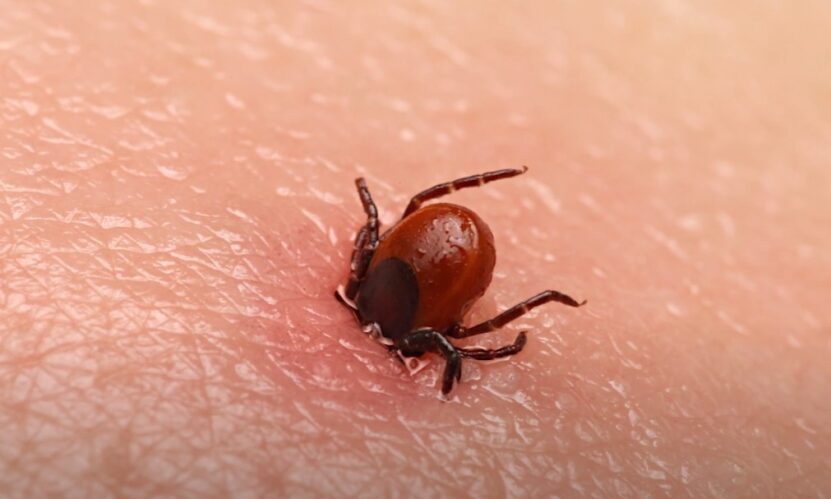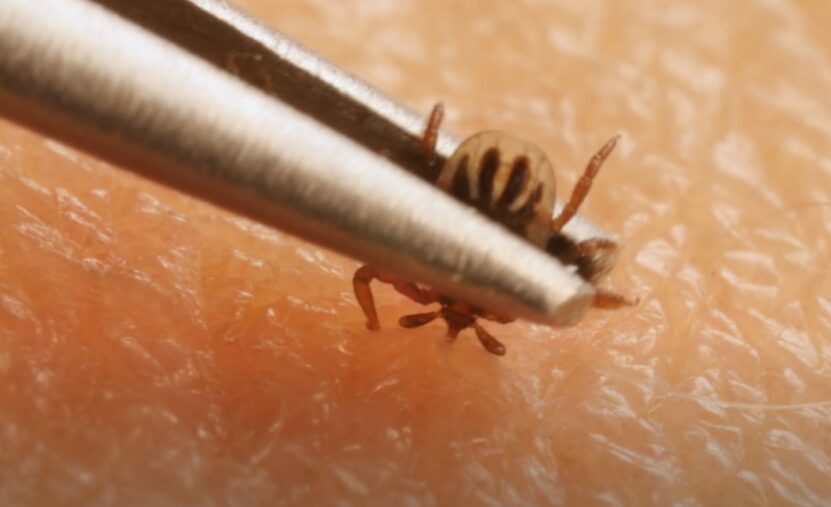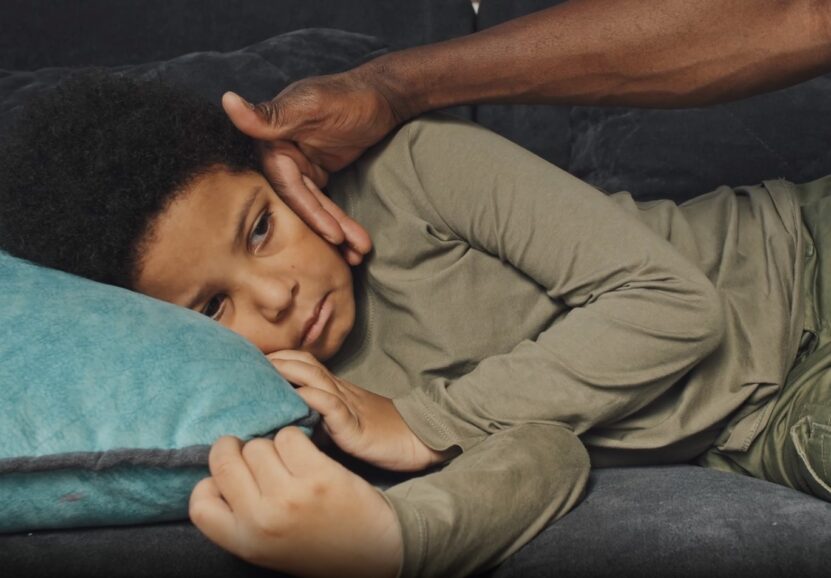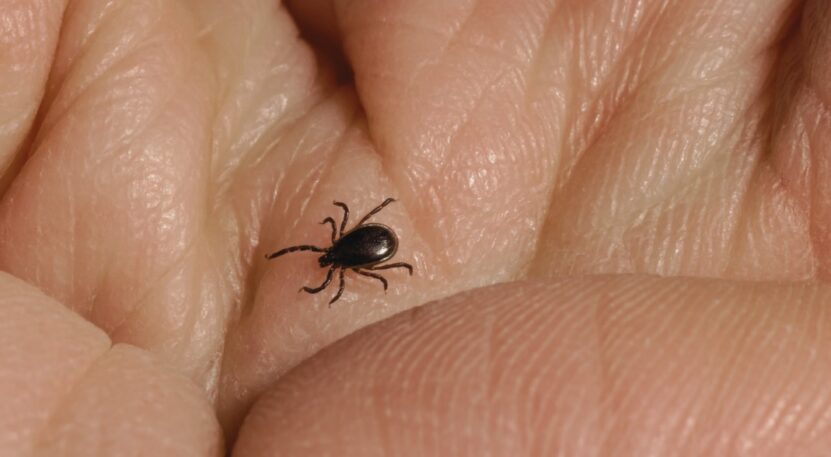As parents, one of our greatest joys is watching our children explore the great outdoors, their faces lit up with wonder and curiosity. Yet, with this exploration comes a tiny but significant concern – the possibility of tick bites.
Having personally experienced finding a tick on my child after a day in the park, I understand the mix of worry and urgency that can flood a parent’s mind.
Therefore, in this blog post, I want to give you clear, actionable guidance on handling tick bites, which I gathered from my personal experience,
How to Identify a Tick Bite?

The first crucial step in responding to a tick bite is identification. These are usually painless and may not be immediately noticeable. However, early detection is vital in preventing possible complications.
Ticks can be as small as a poppy seed or as large as a pea when engorged with blood. The common indicators of these bites include:
- A small red bump, similar to a mosquito bite
- Swelling at the bite site
- A rash, potentially resembling a bull’s-eye
It’s essential to regularly check your child for ticks, particularly after they’ve been playing in areas known to be their habitats, such as wooded or grassy areas. This regular inspection is a critical preventive measure and can help in early detection and removal.
How to Safely Remove It?

Discovering a tick on your child can be alarming, but it’s important to remove it safely and promptly. The correct method of removal minimizes the risk of the transmission of any pathogens.
- Use Fine-Tipped Tweezers: Grasp the parasite as close to the skin’s surface as possible.
- Pull Upward Steadily: Avoid twisting or jerking it, as this can cause mouth parts to break off and remain in the skin.
- Clean the Bite Area and Hands: Use rubbing alcohol, an iodine scrub, or soap and water to clean the bite site and your hands thoroughly.
- Dispose of the Tick: Submerse it in alcohol, place it in a sealed bag/container, wrap it tightly in tape, or flush it down the toilet. Do not crush it with your fingers to avoid any potential contamination.
First Aid and Immediate Care

Once a tick is safely removed, the next step is administering proper first aid. This begins with cleaning the bite area thoroughly with soap and water or rubbing alcohol. Applying an antiseptic cream can also help prevent infection.
It’s important to keep the area clean and to observe it for a few days for any changes.
Recognizing Signs of Infection
After a tick bite, it’s crucial to watch for signs of infection at the bite site. These signs may include increased redness, swelling, pain, or a warm feeling around the bite. If pus or an expanding red area is observed, these could be indications of a bacterial infection, warranting immediate medical attention.
When to Seek Medical Help?
Post-tick removal, the site of the bite should be closely monitored for several days. Keep an eye out for signs of infection or a rash. Be particularly vigilant for symptoms like fever, body aches, or swollen lymph nodes, which could indicate a disease.
If any unusual or concerning symptoms develop, it’s imperative to seek medical attention promptly. Early intervention can be crucial in treating potential diseases transmitted by the parasite.
Diseases Transmitted by Ticks
Ticks are vectors for various diseases, which they transmit through their bites.
The most well-known of these is Lyme disease, but there are several others, including Rocky Mountain Spotted Fever, characterized by fever, headache, and rash;
Anaplasmosis, which causes fever, headache, muscle aches, and chills; and Babesiosis, a parasitic infection that can lead to hemolytic anemia. Understanding these risks is key to recognizing the importance of quick and safe tick removal and the need for vigilance in the days following a bite.
Factors Influencing Disease Transmission
Several factors influence the likelihood of disease transmission from a tick bite:
- the type of tick,
- geographical location,
- and duration of attachment.
Certain ticks are more likely to carry specific pathogens, and some diseases are more prevalent in certain areas. Generally, these parasites need to be attached for several hours before they can transmit pathogens, which underscores the importance of regular checks and quick removal.
Preventive Measures

Prevention is key in the fight against tick bites and the diseases they carry. Dressing your child appropriately for environments where these creatures are prevalent is one of the simplest yet most effective preventive measures. Light-colored clothing makes ticks more visible, and tucking pants into socks can prevent them from crawling under clothing.
Additionally, using repellents containing DEET, picaridin, or IR3535 on exposed skin, and treating clothing with permethrin, can significantly reduce the risk of tick bites. Regular checks, especially after your child has been in a high-risk area, are crucial in early detection and removal of ticks.
Educating Children
Educating children about the risks of tick bites and the importance of preventive measures is an essential aspect of prevention. Encourage your child to stay in the center of trails and avoid venturing into tall grasses or brushy areas.
Teach them the importance of notifying you immediately if they find a tick on their body and the significance of wearing protective clothing and using repellents when in tick-prone areas.
FAQs
Can a tick bite cause paralysis in children?
Yes, in rare cases, it can cause a temporary paralysis known as “tick paralysis.” This condition results from a toxin in their saliva and typically resolves within 24 hours of removing the parasite.
Symptoms start with weakness in the legs, progressing to severe paralysis if the parasite is not removed. Immediate medical attention is advised if you suspect tick paralysis.
How can I differentiate a tick bite from other insect bites in children?
Tick bites are usually more difficult to notice than other insect bites as they are less likely to cause immediate itchiness or pain. A key identifier is the presence of the parasite itself, attached to the skin.
If the tick has already fallen off, the bite may resemble a small red spot, sometimes with a distinct rash or bull’s-eye pattern, distinguishing it from mosquito or flea bites.
Are there any natural or home remedies recommended for treating a tick bite in children?
While there are many natural remedies suggested for insect bites, it’s important to approach the bites with caution due to the risk of disease transmission. The best immediate response is to remove the parasite carefully and clean the area with soap and water.
Consult a healthcare provider for advice on additional care, especially if you prefer using natural remedies.
Is it necessary to vaccinate my child against Lyme disease after a tick bite?
Currently, there is no vaccine available for Lyme disease. The best course of action following the bite is careful monitoring for symptoms and seeking medical advice if any symptoms develop. Preventive antibiotics are not routinely recommended but may be considered in certain high-risk cases.
How long should I monitor my child for symptoms after a tick bite?
It is advisable to monitor for any symptoms for at least 30 days post-bite. Symptoms of tick-borne diseases like Lyme disease can appear anywhere from 3 to 30 days after the bite. Also, Lyme disease can cause an ear infection. Keep an eye out for any rash, fever, fatigue, or joint pain, and consult a healthcare provider if any symptoms arise.
Should the tick be tested for diseases after removal from my child?
Testing the tick is not generally recommended as a standard practice. The results may not be reliable and do not necessarily indicate whether your child has been infected. Focus instead on monitoring your child for symptoms and consult a healthcare professional if you have concerns.
If you wish, you can save the parasite in a sealed bag or container and bring it to your healthcare provider for identification.
Final Words
In conclusion, understanding the risks associated with tick bites and knowing how to respond if your child is bitten are essential components of ensuring their safety and health.
By practicing preventive measures, promptly removing ticks, and being vigilant for symptoms of tick-borne diseases, parents and caregivers can significantly reduce the risks associated with these tiny but potentially dangerous creatures.
